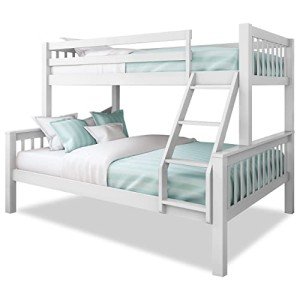
When it comes to enhancing space in smaller sized bed rooms-- like those found in homes, children's spaces, or visitor rooms-- bunk beds are a popular choice. Nevertheless, materializing a practical yet elegant sleeping plan can be challenging. Get in the world of single bunk beds, which not only supply sleeping options but can likewise boost the space's decoration. Below, we check out three standout single bunk bed alternatives that integrate performance, design, and safety.
Timeless wooden single bunk beds have a timeless appeal that suits various interior design styles. These beds tend to use sturdiness and stability and can fit seamlessly into both modern-day and traditional space designs.
| Pros | Cons |
|---|---|
| Long lasting and lasting | Heavier and might require assembly |
| Versatile design options | Potential for a greater cost point |
| High safety requirements | Less portable as soon as put together |
Traditional wooden bunk beds are perfect for households searching for a long-lasting sleeping option or producing a cozy visitor room.
Metal single bunk beds offer a smooth, commercial appearance that matches contemporary design. These beds often are available in a variety of colors and designs, making them versatile for various space themes.
| Pros | Cons |
|---|---|
| Lightweight and simple to move | May feel less relaxing than wood |
| Easy to clean and maintain | Can be noisy (squeaking) |
| Modern visual | Less insulation from cold surfaces |
Metal bunk beds are an excellent choice for college dormitories or minimalist-style rooms seeking a contemporary, stylish aesthetic.
Lofted single bunk beds take the concept of space-saving to a new level. Unlike standard Double Bunk Bed Single On Top beds, these beds raise a single mattress above, permitting for a relaxing desk or play area below.
| Pros | Cons |
|---|---|
| Optimizes vertical space | Needs higher ceiling clearance |
| Great for developing play/work areas | Can be less appropriate for younger children |
| Increases storage choices | Assembly can be complicated |
Lofted single bunk beds are an ideal choice for teens or young people living in small spaces who need a designated sleep and workspace.
| Bunk Bed Type | Material | Weight Capacity | Safety Features | Suitable Use |
|---|---|---|---|---|
| Classic Wooden | Wood | 200-300 lbs | High safety rails | Household and guest rooms |
| Metal | Metal | As much as 400 pounds | Included guardrails | Modern, minimalist style |
| Lofted | Wood/Metal | Differs | Guardrails and ladders | Small rooms needing multipurpose space |
Many producers advise that children aged 6 and older can securely use bunk beds. Younger kids might be at risk of climbing up and falling from the upper bed.
Frequently look for wobbling by ensuring bolts and screws are tightened up. Clean the bed frames with a soft wet fabric, and prevent using harsh chemicals that can damage the finish.
Many bunk beds, especially metal ones, featured the alternative to be separated into two single beds. It provides more adaptability as requirements alter over time.
Think about the space size, how lots of users it will accommodate, and the age of the users. Procedure the readily available vertical space to make sure the bunk bed fits easily without running the risk of headroom.
Yes, as long as proper safety measures are taken. Try to find beds with guardrails, a durable frame, and premium building to ensure stability and security.
Single bunk beds offer an efficient option to space restrictions while supplying design and functionality. From traditional wooden styles that evoke a traditional appeal to streamlined metal models that fit modern aesthetic appeals, there's a bunk bed for each need. Lofted choices even more take full advantage of space use, making them ideal for compact living. With the ideal choice, making the most of space doesn't need to indicate compromising on comfort or design-- a perfect blend of safety, style, and function can certainly be accomplished.
No Data Found!

